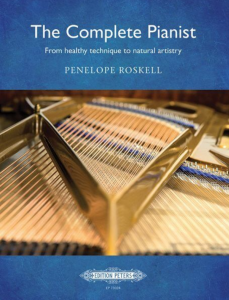Above is the famous reading room in the original British Library - somewhere I was lucky enough to study for a short period in the 80s. I'm always on the hunt for new material to help me deepen my knowledge or to help me explain advanced concepts better. If you too are hungry for more info, here are some links that may be of interest and of course, please do drop me a line if you've discovered something you want to share!
Fundamentals of Piano Practice: Third Edition
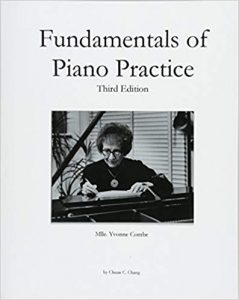 Their website says "This is the best book ever written on how to practice at the piano! Most books list what skills are needed (scales, arpeggios, trills, etc.), but not how to acquire them. This book teaches how to solve technical problems, step by step. Learn practice methods, how to acquire technique and memorize hours of repertoire, sight reading, musical playing, relaxation, etc., and, most importantly, Mental Play in which you learn to play the piano in your mind. Mental play touches every aspect of piano playing, from memorizing, controlling nervousness, developing performance skills, playing musically, etc., to acquiring absolute pitch, composing and improvisation."
Their website says "This is the best book ever written on how to practice at the piano! Most books list what skills are needed (scales, arpeggios, trills, etc.), but not how to acquire them. This book teaches how to solve technical problems, step by step. Learn practice methods, how to acquire technique and memorize hours of repertoire, sight reading, musical playing, relaxation, etc., and, most importantly, Mental Play in which you learn to play the piano in your mind. Mental play touches every aspect of piano playing, from memorizing, controlling nervousness, developing performance skills, playing musically, etc., to acquiring absolute pitch, composing and improvisation."
"This is the first book that teaches piano practice methods systematically, based on my lifetime of research, and containing the teachings of Combe, material from over 50 piano books, hundreds of articles, and decades of internet research and discussions with teachers and pianists. Genius skills are identified and shown to be teachable; learning piano can raise or lower your IQ. Past widely taught methods based on false assumptions are exposed; substituting them with efficient practice methods allows students to learn piano and obtain the necessary education to navigate in today's world and even have a second career. See http://www.pianopractice.org/"
The Art of Piano Fingering: Traditional, Advanced, and Innovative
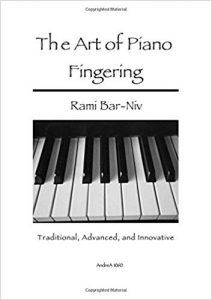


The Joy Of Improv
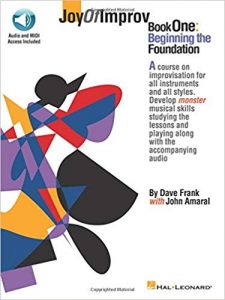


"(Piano). This course on improvisation for all instruments and all styles will help players develop monster musical skills! Book One presents Lessons 1 through 26 of this unique instructional course that imparts a solid basis in technique, rhythm, chord theory, ear training and improv concepts. Covers: common chord voicings, basic chord progressions, the swing feel, and much more. The audio can be used as a listening and play-along tool. The audio is accessed online using the unique code inside each book and can be streamed or downloaded. The audio files include PLAYBACK+, a multi-functional audio player that allows you to slow down audio without changing pitch, set loop points, change keys, and pan left or right.
Oscar Peterson: Jazz Exercises, Minuets, Etudes and Pieces for Piano
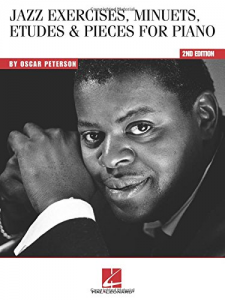


Oscar Peterson needs no introduction to anyone who's taken more than a cursory interest in the world of jazz piano players. What's not so well known is that he wrote this charming and helpful set of pieces and exercises to help beginners find their way around jazz piano playing.
This book covers basic concepts such as finger dexterity, syncopation, left hand technique (stride, ragtime and walking bass lines), right through to some impressive lines which would not sound amiss as part of anyone's evolving jazz vocabulary. Highly recommended for an authentic look at jazz piano as performed by one of the world's most accomplished exponents.
Building a Jazz Vocabulary: A Resource for Learning Jazz Improvisation
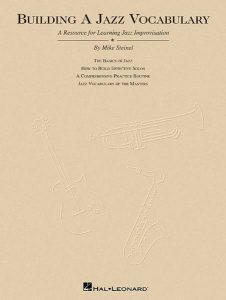


This has been a very helpful book, both in my continuing evolution as a jazz pianist and as teacher looking for effective resources to help me explain advanced concepts.
"(Jazz Book). A valuable resource for learning the basics of jazz from Mike Steinel of the University of North Texas. It covers the basics of jazz, how to build effective solos, a comprehensive practice routine, and a jazz vocabulary of the masters" Amazon
The Complet Pianist: From Healthy Technique To Natural Artistry
It's well enough done, but there's nothing particularly new here for those of us who are committed enough to further study of piano playing to pay the asking price for this book. It's handy though to have a collection of what most pianists would like to know all in one place.
When it comes to technique, there are a few schools of thought on physical aspects of playing and it may depend on your particular persuasion whether you consider the advice sound or not, however one has to applaud Penelope Roskell for the sheer immensity of the job she took on when collating this impressive tome!
Swing and its permutations.
Swing is a beautifully imprecise concept, allowing the performer to interpret the feel of music in their own way. If like me you've worked with African & Brazilian drummers, you'll know that it's impossible to precisely notate some of their rhythms. Some people talk about the 'African triplet' and this is a good description of that phenomenon, because African rhythms often move between straight 4/4 time and compound triple time (12/8, 6/8 etc). If you listen to transitions between the two, you'll often hear a blurring of the lines between quaver triplets and quavers ('eighth notes' for the Septics) - the hits often fall outside of the 'grid' of actual notation and quantisation. This is one of the elements we are referring to when we talk about 'grooving'.
The African triplet is ALSO one of essential factors to be considered when talking about the evolution of 'jazz swing'. Of course jazz went through the bouillabaisse of the American tradition, mixing with many other elements to end up where it is today, but this is a good starting point if you're studying the idea.
Here are some links:
Wikepedia has a good take on it from a historical perspective: https://en.wikipedia.org/wiki/Swing_(jazz_performance_style)
Here's an interview with someone working regularly with jazz: http://jazzbackstory.blogspot.co.uk/2010/05/but-does-it-swing.html

